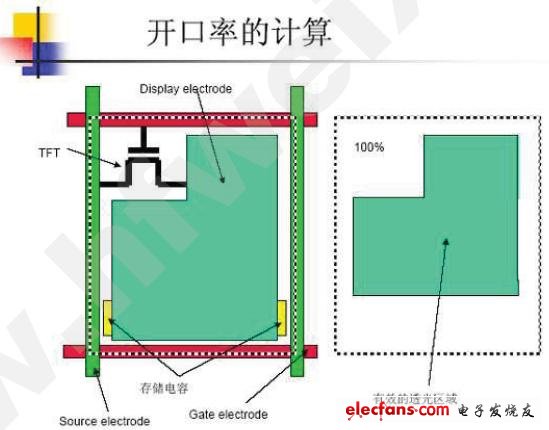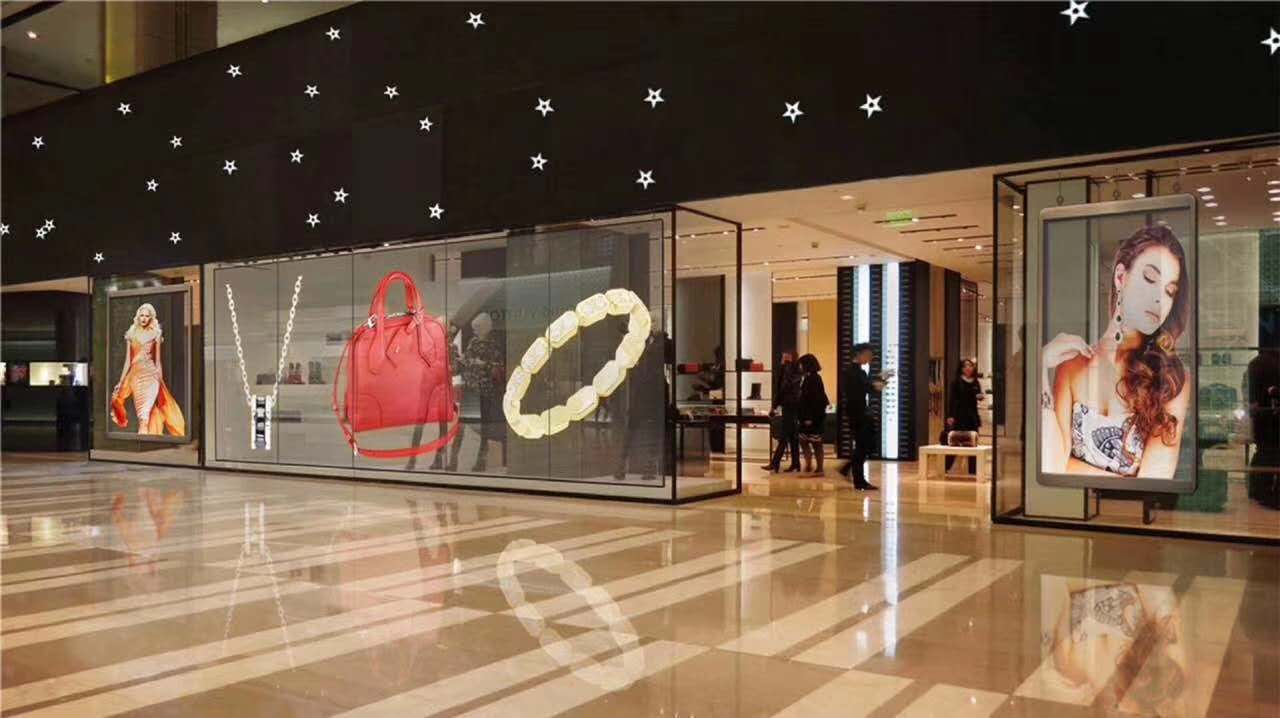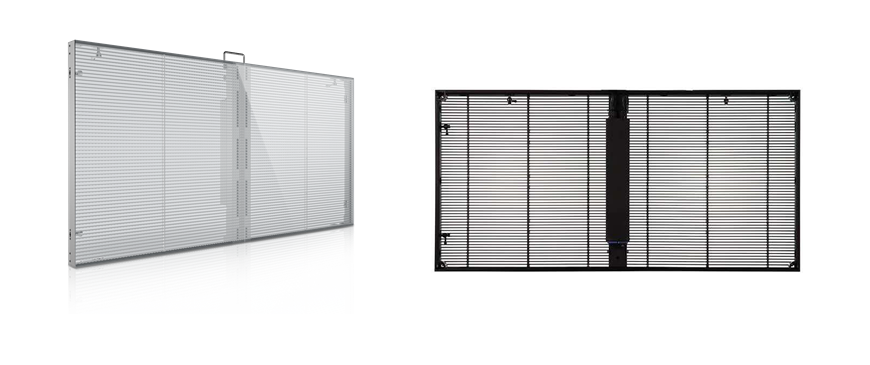Aperture raTIo A very important specification in the LCD is brightness, and the most important factor in determining brightness is the aperture ratio. What is the aperture ratio? Simply put, it is the ratio of the effective area through which light can pass. The left side of the figure below is a structure diagram of a liquid crystal display viewed from above or directly below. When light is emitted through the backlight panel, not all light can pass through the panel, such as signal traces for the LCD source driver chip and gate driver chip, the TFT itself, and storage capacitors for storing voltage, etc. . In addition to incomplete light transmission in these places, because the light passing through these places is not controlled by the voltage and cannot display the correct grayscale, they must be masked by the black matrix to avoid interference with the correct brightness of other light-transmitting areas . Therefore, the effective light transmission area is only the area shown on the right side of the figure below. The ratio of this effective light-transmitting area to the entire area is called the aperture ratio. When the light is emitted from the backlight, it will pass through the polarizer, glass, liquid crystal, color filter, etc. in order. Assume that the transmittance of each part is as follows: polarizer 50% (because it only allows one direction Polarized light wave through), glass 95% (two upper and lower pieces need to be calculated), liquid crystal 95%, aperture ratio 50% (effective light transmission area is only half), color filter 27% (assuming the material itself has a transmittance 80%, but because the filter itself is painted with color, it can only allow light waves of that color to pass. In the case of the RGB three primary colors, only one of the three can be allowed to pass, so only one third of the brightness is left. Therefore, only 80% * 33% = 27% can be passed. ) Based on the above-mentioned penetration rate, only 6% of the light from the backlight board is left, which is really pitiful. This is why in the design of TFT LCD, the aperture ratio should be increased as much as possible. As long as the aperture ratio is increased, the brightness can be increased, and at the same time, the brightness of the backlight panel is not so high, which can save power consumption and cost.
Transparent Led Display has won the favor of customers all over the world with its advantages of energy saving, environmental protection, low operating cost and high business efficiency. Transparent screen in order to meet the requirements of brightness in the process of use, there are positive luminescence and side luminescence options, the brightness can reach more than 5500. The use of transparent glass screen is mainly in Curtain wall building.Store window.Technology exhibition.Commercial space.Creative Presentation and so on.
Compared with conventional display screens, transparent glass screens have the following advantages:
1.Over 70% transparent rate favorable daylight effect;
2.Slim design ,light weight;
3.Cabinet is beautiful appearance,light
weight, good heat dissipation and durable;
4.The mask of transparent uses PC with good
light-admitting quality, ductility and durability;
5.Fast plugs within cabinets for quick and easy installation;
6.Indoor installation and maintenance, fast.safe,
low heat, no ventilator, no noise;
Transparent Led Display,Transparent Led Display With Side Lighting,Transparent Glass Display Led Wall,Transparent Curtain Display Screen Shenzhen Vision Display Technology Co,.LTD , https://www.ledvdi.com

